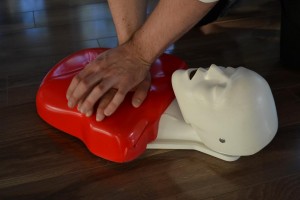Anaphylaxis is also called an anaphylactic shock which is a reaction that can be considered life-threatening. In most cases, once an individual suffers anaphylaxis, it is vital to bring him/her to the emergency room.
Causes of anaphylaxis
If an individual already experienced an allergic reaction, he/she is at risk for anaphylaxis. On the other hand, not all allergic reactions will eventually lead to anaphylaxis.
Allergic reactions that can put an individual at risk for anaphylaxis include food allergies especially soy, egg, milk, shellfish, tree nuts and peanut as well as allergies to certain medications and insect sting or bites. Other less common causes include a previous anaphylactic shock, exercise or allergy to latex.
Symptoms of anaphylaxis
Always bear in mind that anaphylaxis can cause several symptoms. Most of these symptoms occur with during allergic reactions. An anaphylaxis is considered different since a number of symptoms can all manifest at the same time.
- Runny nose or sneezing
- Hives or itchy skin
- Swollen limbs
- Itchy throat, mouth and swollen tongue and lips
- Difficulty swallowing
- Coughing
- Vomiting
- Cramps
- Diarrhea
Severe anaphylaxis symptoms
Some of the symptoms during an anaphylactic reaction are considered as severe that it would require emergency care.
- Chest pain or tightness in the chest
- Shortness of breath
- Weak and rapid pulse
- Low blood pressure
- Dizziness
- Confusion
The symptoms of an anaphylactic shock can progress very quickly. The treatment must be provided within 30-60 seconds since the symptoms can be fatal. You have to bear in mind that the symptoms of anaphylaxis usually follows a pattern. The symptoms manifest minutes after contact with the allergen and followed by the appearance of the symptoms at the same time. Take note that the first batch of symptoms vanishes but returns after 8-72 hours. One reaction can persist for several hours.
When to seek help

If you suspect that an individual is experiencing an anaphylactic reaction, it is important to seek emergency medical care right away. Always make sure that the individual is comfortable and you have to elevate the legs to help with the flow of blood. In case the individual stops breathing, perform CPR until the medical team arrives. Individuals who are prone to severe allergies bring along an epinephrine auto-injector. This can be given to help counteract the symptoms of the reaction.
How to use an epinephrine auto-injector
Take note that epinephrine is used to treat anaphylaxis. It is administer via an auto-injector that contains a needle, delivering a single dose at a time. The injection site is usually on the outer thigh muscle. After an injection is given, the symptoms of the reaction should improve right away. If not, a second injection of epinephrine can be given. It is still best to consult a doctor so that further treatment can be provided.
How to prevent an anaphylaxis
The best way to stop an anaphylaxis from occurring is to avoid the allergy triggers. The doctor can help determine the allergy triggers using tests such as a blood test or skin prick test.
